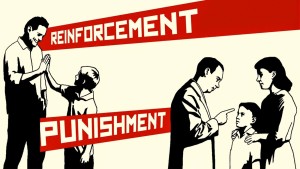intrinsic reinforcers
are reinforcing events gained from the pleasure of simply engaging in the behaviour. Studying may be intrinsically reinforcing if it gives a person the pleasure of increased understanding. A major goal of Heather Ronngard Educational Consultancy is to teach you how to involve your students in constructive behaviours, which will hopefully become intrinsically reinforcing.
positive reinforcers
are objects, events or experiences which when they are presented immediately following the performance of a behaviour, strengthen the chances that the behaviour will occur again. A positive reinforcer may be anything that your student values, a desired object, an enjoyable activity or a person whom he/she likes. There are several types of reinforcers.
token reinforcers
are reinforcers such as money, points, stars or tokens which have value in that they can be traded for a preferred object, activity or experience
tangible reinforcers
are tangible objects such as candy, nuts, storybooks, puzzles, pencils with names and other items which are valued in and of themselves.
activity reinforcers
are preferred activities valued because they are fun, exciting or because they generate a good feeling. Running errands, helping other children, free time in the library, working a puzzle and other classroom activities are just a few of the many available activity reinforcers.
social reinforcers
are positive consequences such as praise or non-verbal demonstrations of affection, which are valued because they are given by people important to the child. In praising the child it is important to praise the behaviour not the child. It is better and more powerful to say ‘I like the job you did cleaning up your desk’ than simply say ‘Good girl.’
